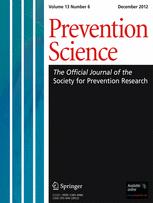Nearly three-quarters of the newspaper stories mentioning suicide and the holidays over the 2012-2013 holiday period perpetuated the myth that more people commit suicide during that season, according to an analysis by the Annenberg Public Policy Center.
Mental health
Movie violence associated with sex, alcohol and tobacco use
Nearly 90 percent of the top-grossing movies over a 25-year period show main characters acting violently, and in 77 percent of the movies those characters also engage in sex-, alcohol- or tobacco-related behavior, a new study has shown. The study published in Pediatrics, by researchers at the Annenberg Public Policy Center, found that more than half of the biggest PG-13 movies featured a main character acting violently and involved in either drinking, sexual behavior or smoking within a five-minute segment.
Nursing intervention helps mentally ill people with HIV
Having trained nurses follow up on medication use with mentally ill patients who are HIV positive was effective both at improving the patients’ quality of life and biological markers for the human immunodeficiency virus, according to a new study from researchers at the University of Pennsylvania. The study is thought to be the first to
Issue brief: Drug Prevention in Schools
Dan Romer, director of APPC’s Adolescent Health and Communication Institutes, reviews the evidence on ways to prevent drug abuse in middle and high school youth, focusing on mandatory random drug testing. Since the 1990s, interest has been growing in the use of such tests to deter drug use among teenagers. The review finds that mandatory
As the national adult suicide rate increases, news stories about suicides during the holidays grow in number
A common misperception about the end of year holidays is that more people commit suicide during this period than at other times in the year. Since 2000, the Annenberg Public Policy Center has been tracking press reporting about this widespread belief. In the millennium year of 1999, APPC identified over 60 stories that ran during
Weakness in working memory predicts progression of alcohol use in early adolescents
Research points to the potential for prevention Weakness in a cognitive skill called "working memory" predicts both the initiation and the escalation of alcohol use in adolescents ages 10 to 15, according to a longitudinal study by researchers at the Annenberg Public Policy Center of the University of Pennsylvania and the Children’s Hospital of
Use of effective coping strategies is associated with reduced suicidal ideation among both male and female youth
But males are more successful in reducing stress than females In a study recently published in Prevention Science, researchers at the Annenberg Public Policy Center of the University of Pennsylvania found that youth who naturally use effective coping strategies to deal with interpersonal stressors (such as bullying) experience lower levels of perceived stress, feelings of


